
[BOAC, de Havilland DH106 Comet] Meet the man who won a seat on BA's
It was the last leg of the new scheduled British Overseas Airways Corporation (BOAC) jet passenger flight between London and Johannesburg. Some 36 hours later, with a new crew on board, the.
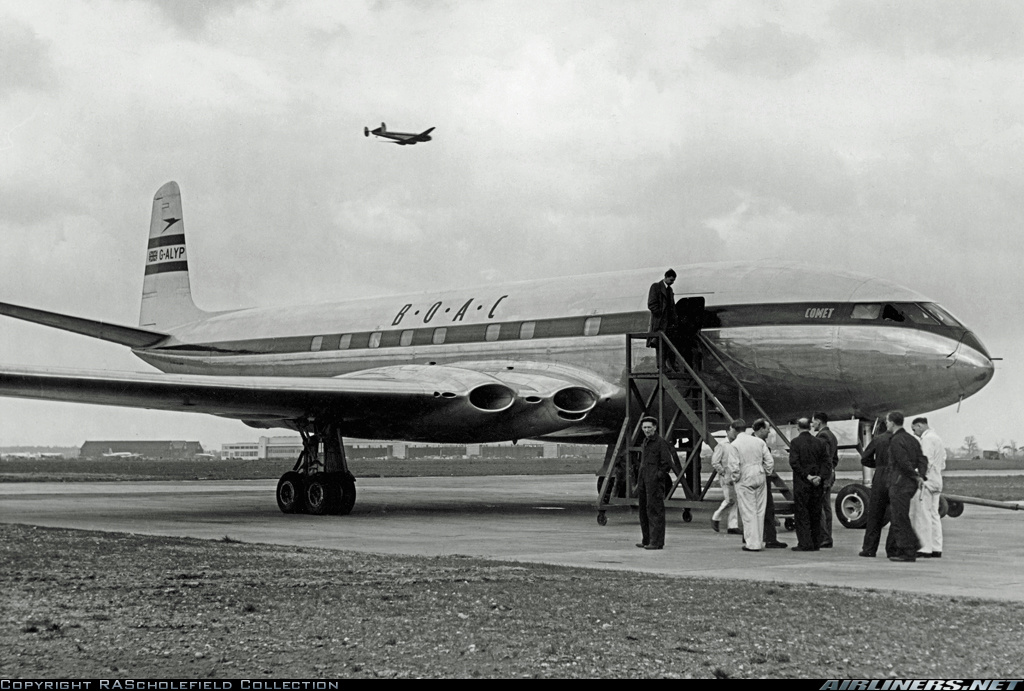
De Havilland DH106 Comet 1 BOAC Aviation Photo 2016688
Neither Money Nor Manpower: The story of the de Havilland Comet and the crash of BOAC flight 781 Admiral Cloudberg · Follow 30 min read · Mar 18, 2023 22 Note: this accident was previously.

B.O.A.C DH Comet 4 at Essenden airport. Melbourne Australi… Flickr
On October 4th, 1958, a British Overseas Aircraft Corporation ( BOAC) de Havilland DH.106 Comet conducted the first-ever regularly scheduled commercial jetliner transatlantic crossing. The event would open up new opportunities for the aviation industry, leaving a legacy over six decades later. New opportunities

Technology transforming our world « Psychological Universe
Nineteen Mk.4s were ordered for BOAC and, in October 1958, two of them (flying east-west and west-east simultaneously) made the world's first transatlantic jet flights with fare-paying passengers. In total, 74 Comet 4 aircraft were built including Mk.4B and 4C versions. Aircraft specifications:

De Havilland Comet 4. (BOAC livery.) De havilland comet, De
On 2 May 1953, BOAC Flight 783 ( BA783/BOA783 ), a de Havilland Comet jetliner registered G-ALYV and operated by British Overseas Airways Corporation, broke up mid-air and crashed after encountering a severe squall, shortly after taking off from Calcutta (now Kolkata), India. All 43 passengers and crew on board were killed. [1]
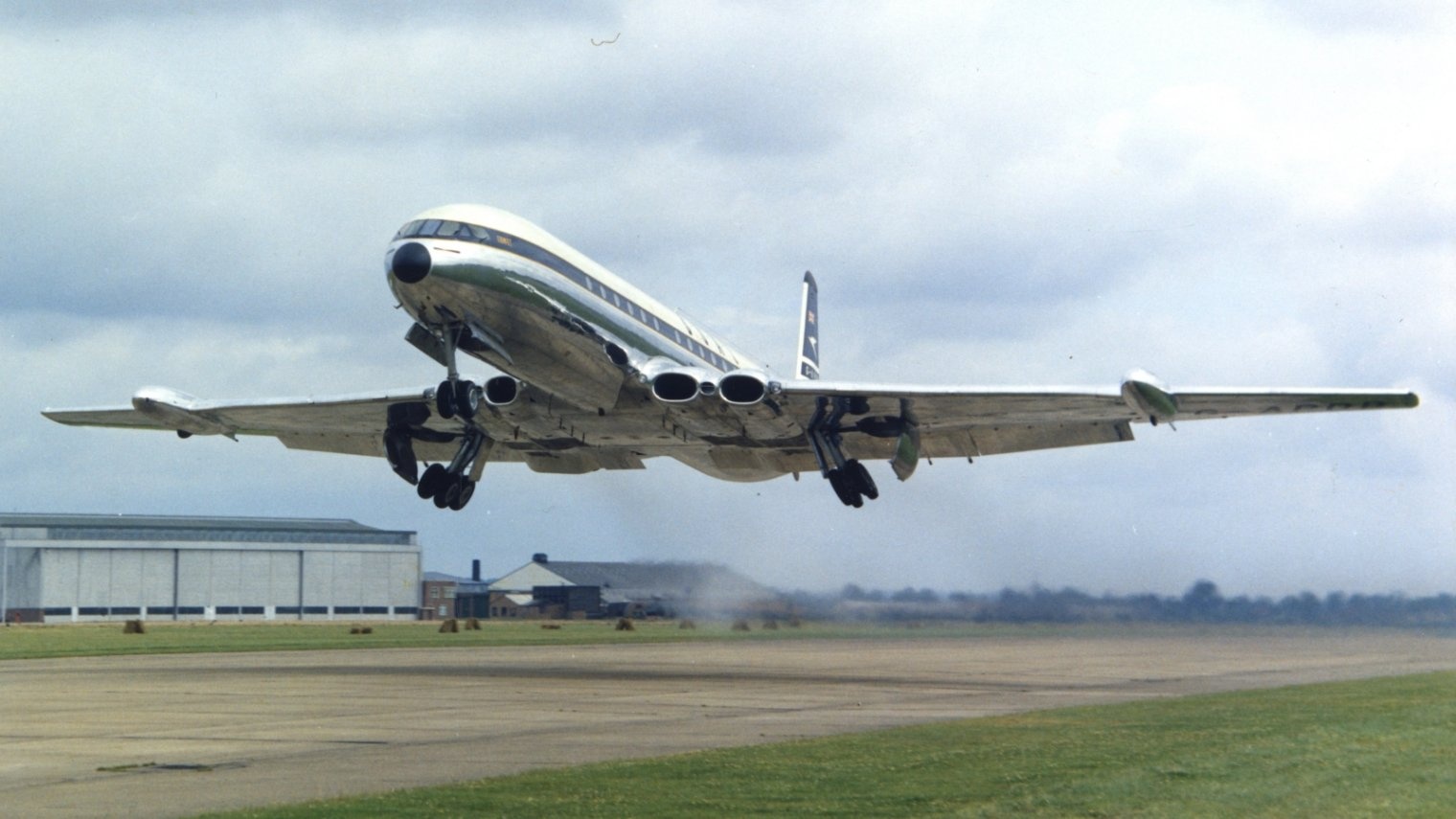
De Havilland DH106 Comet 3 & 4 BAE Systems
De Havilland learned the harsh lessons of fatigue crack growth and passed these on to other aircraft manufacturers. Current Picture The Comet was painted in BOAC livery in July 1978 and transported to the Museum on 17 September 1978 where it is currently on display. Although G-APAS never flew in BOAC markings, this colour scheme is.

BOAC De Havilland Comet 4B, 1959 … De havilland comet, Passenger
BOAC Flight 781 departed Rome, Italy on a flight to London, England. While climbing through 27,000 feet, the plane experienced a sudden in-flight break-up and crashed into the Mediterranean Sea near the Island of Elba. All 35 passengers and crew on board were killed.

Why Did The de Havilland Comet Jet Airliner Keep Crashing? Plane
The de Havilland Comet was a success story for the British aviation company, helping to usher in the age of jet aircraft. However, for all its initial perks like long-range and fast speeds, competitors soon caught up and released their own, improved jet airliners like the Boeing 707 and Vickers VC10. Dan-Air bought a total of 48 Comets by the.

De Havilland DH106 Comet 1 BOAC Aviation Photo 1588548
On Saturday, May 2, 1952, the world's first jetliner service began commercial operations when a British Overseas Airways Corporation (BOAC) De Havilland Comet passenger jet, registration G-ALYP,.

DE HAVILLAND COMET 1XB GAPAS BOAC colours Ex Air France a… Flickr
Commissioned in the early 1940s by the British government in its quest to find a fast and capable mail plane, famed designer Geoffrey de Havilland answered the call with the Comet, a jet-powered design that would likely be the first such plane in history. The idea was risky.
BOAC de Havilland Comet. 1952 Farnborough Air Show, UK r/aviation
On October 26, 1952, a British Overseas Aircraft Corporation (BOAC) Comet was on a London to Johannesburg flight. During the first stop on route at Rome Ciampino Giovan Battista Pastine Airport (CIA), while taking off for Beirut on the next leg of the journey, the aircraft had a problem taking off.

De Havilland DH106 Comet 4C BOAC Aviation Photo 2641812
The De Havilland Comet 1 is regarded as a feather in the cap for British design and innovation and promises to usher in a new era of faster, smoother air travel.. BOAC's regular flights to Johannesburg on piston-engine Hermes airliners take 27 hours and 55 minutes to reach their destination on a route 1,000 miles shorter than the Comet's.

De Havilland DH106 Comet 1XB BOAC Aviation Photo 1383013
A de Havilland Comet, registered G-ALYP crashed on the 10 th of January, 1954 after shortly taking off from Rome. The BOAC flight was supposed to arrive in London Heathrow Airport, but it crashed near the Italian island of Elba. 35 people died on board the aircraft that day.
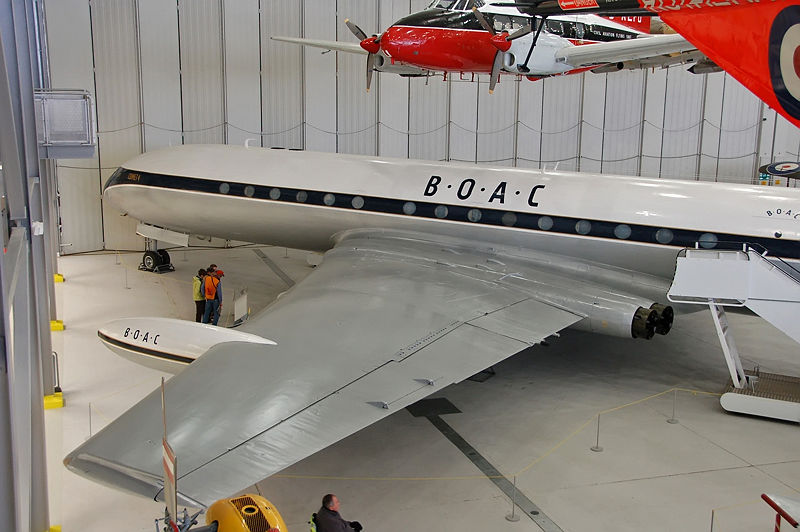
de Havilland Comet
The de Havilland DH.106 Comet is the world's first commercial jet airliner. Developed and manufactured by de Havilland in the United Kingdom, the Comet 1 prototype first flew in 1949. It features an aerodynamically clean design with four de Havilland Ghost turbojet engines buried in the wing roots, a pressurised cabin, and large windows.

De Havilland DH106 Comet 1XB BOAC Aviation Photo 0987869
Building on the British lead in jet engine technology following World War II, de Havilland developed and flew the first commercial jet aircraft in 1949, several years ahead of rival Boeing in America. Known as the D.H.106 Comet, the ailiner used four of the new de Havilland Ghost 50 turbojet engines mounted in the wing root leading edge of an.
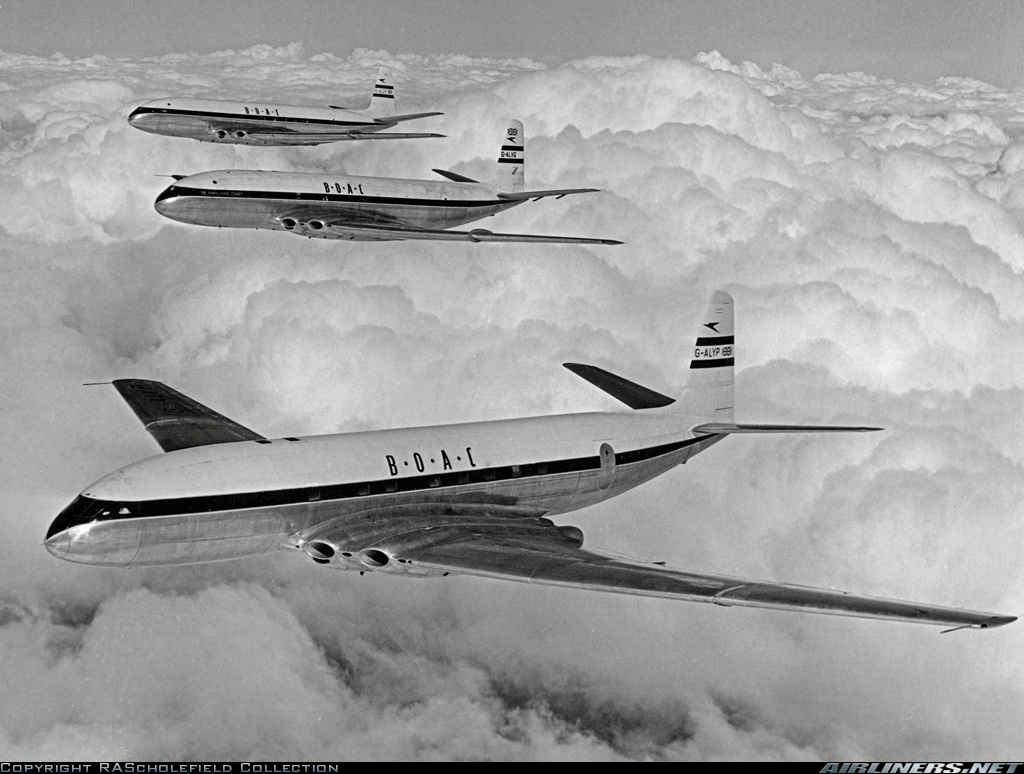
De Havilland DH106 Comet 1 BOAC Aviation Photo 1922024
Among the most shocking were the three occasions, within a year, when brand new de Havilland Comet airliners broke up in flight. Launched into service with BOAC in 1952, the Comet was the world.